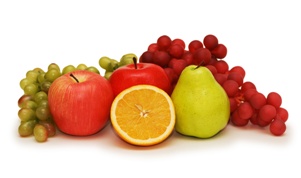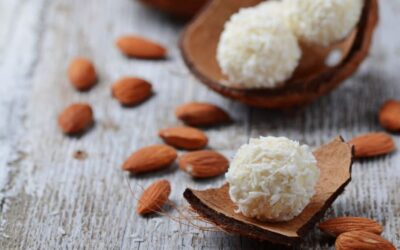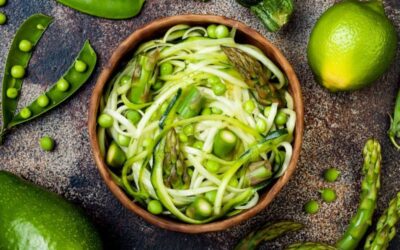Have you noticed that A LOT of health writers place fruit on their “hit list” of foods to avoid? Some even put it right up there as just a notch above high fructose corn syrup!
So what's wrong with fruit? Actually, there is a book by that name, and, not surprisingly, I own it. I bought it back in the dinosaur days when you actually had to physically own a book in order to read it!
It was at a time when I was exploring macrobiotics, and raw fruit was only supposed to be about 5% of calories on any given day. If you are small and relatively inactive like most people and sustain yourself on a 1500 calorie a day regime, that amounts to less than one piece of fruit.
Fruit: To Fear or to Cheer?
In general, when online authors suggest you should limit or eliminate fruit they tell you that fruit:
- triggers outbreaks of candida yeast (Donna Gates)
- triggers blood sugar swings and cravings (South Beach Diet)
- increases risk of diabetes (Joseph Mercola)
- promotes an acid residue that can feed cancer (Robert O. Young)
- promotes “composting” that can result in overgrowth of unfriendly microorganisms (Gabriel Cousins)
Personally, what I've observed is all over the map.
I've seen diabetics on my green cleanse program normalize their blood sugars within 3 days while drinking nothing but green smoothies that contain between 40 and 50% fruit by volume. That adds up to a lot of fruit over the course of the day.
On the other hand, I've seen other diabetics spike their sugars by adding a few strawberries to a green drink.
I've read accounts of women who've healed from chronic yeast overgrowth while eating a diet consisting of primarily fresh fruit. I've also personally coached patients who are so sugar sensitive they have yeast flare-ups after a few bites of apple.
So What's the Truth? Is Fruit a Friend or Foe?

We are each biochemically and energetically unique. We are shaped by our genes, early exposures, the way we were nurtured, how safe we felt in our early years, our diets, movement and sleep patterns, and even our thoughts. Your response to the world is slightly different from mine. This is true of how we behave in response to outside stimuli as well as how we respond to food. It is said that one man's food is another man's poison.
I've found over the years that, for many people, one of the best ways to determine which foods are helpful and which are hurtful is to test. And one of the best ways to test is to remove all the potentially problematic foods and add them back in one at a time.
This is called elimination/provocation.
For many people, the best way to do the elimination phase is by fasting on either water or vegetable juice for a prescribed length of time and then reintroduce foods such as fruits.
Solutions for Finding Out if You Are Fruit Sensitive
If you’ve been wondering if you’re sensitive to fruit sugar, here are some questions to ask yourself to determine if fruit is a friend, foe, or in between:
- Do find yourself feeling spacey or light headed after eating fruit by itself?
- Do you crave sugar after eating fruit?
- Does eating lots of fruit cause intestinal upset?
- Do you break out in a rash when you eat lots of fruit?
Carefully observe how you respond to eating fruit and experiment with using low-sugar fruits versus high-sugar fruits. Also try combining fruit with greens and eliminating fruit for a few weeks.
If this is a course of action you’re willing to try, here’s what I suggest:
- Follow 10 days of eating no fruit at all, except for lemons. The ideal way to do this is by fasting or juicing.
- After your 10 days of elimination, eat a meal containing 3-5 pieces of fresh ripe fruit all by itself. Monitor how you feel over the next few hours.
- Next, eat a meal containing the same amount of fruit but this time eat it on a bed of greens or blended with greens into a smoothies.
Try this with a few different types of fruit, in particular with berries. Add cinnamon to your fruit and see if that changes things. You may have blood sugar imbalances that can be corrected by a 30-day insulin receptor reset.
Over the years, I've developed my own special relationship with fruit. I rarely eat a lot of it by itself. Personally, I feel best when I eat fruit along with greens.
The first step is to start on the elimination path. If you need support, take part in a group juice cleanse with other people. You can join me with Tera Warner of The Raw Divas for a 10-Day Juice Cleanse starting on August 1st. You'll also find extra educational support here in our radio show on “How Juicing Affects Your Blood Sugar”.
Fruit does not have to be your foe forever. If you know you have fruit issues and you want to heal your sensitivies, address problems with abdominal fat, and improve your overall energy, you'll find your best strategies for health and support using the Insulin Sensitivity Restoration System which you'll find here.







0 Comments
Trackbacks/Pingbacks